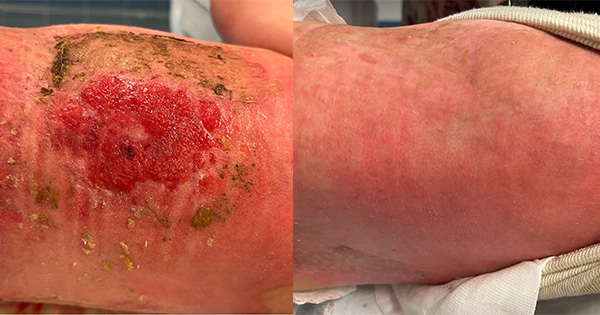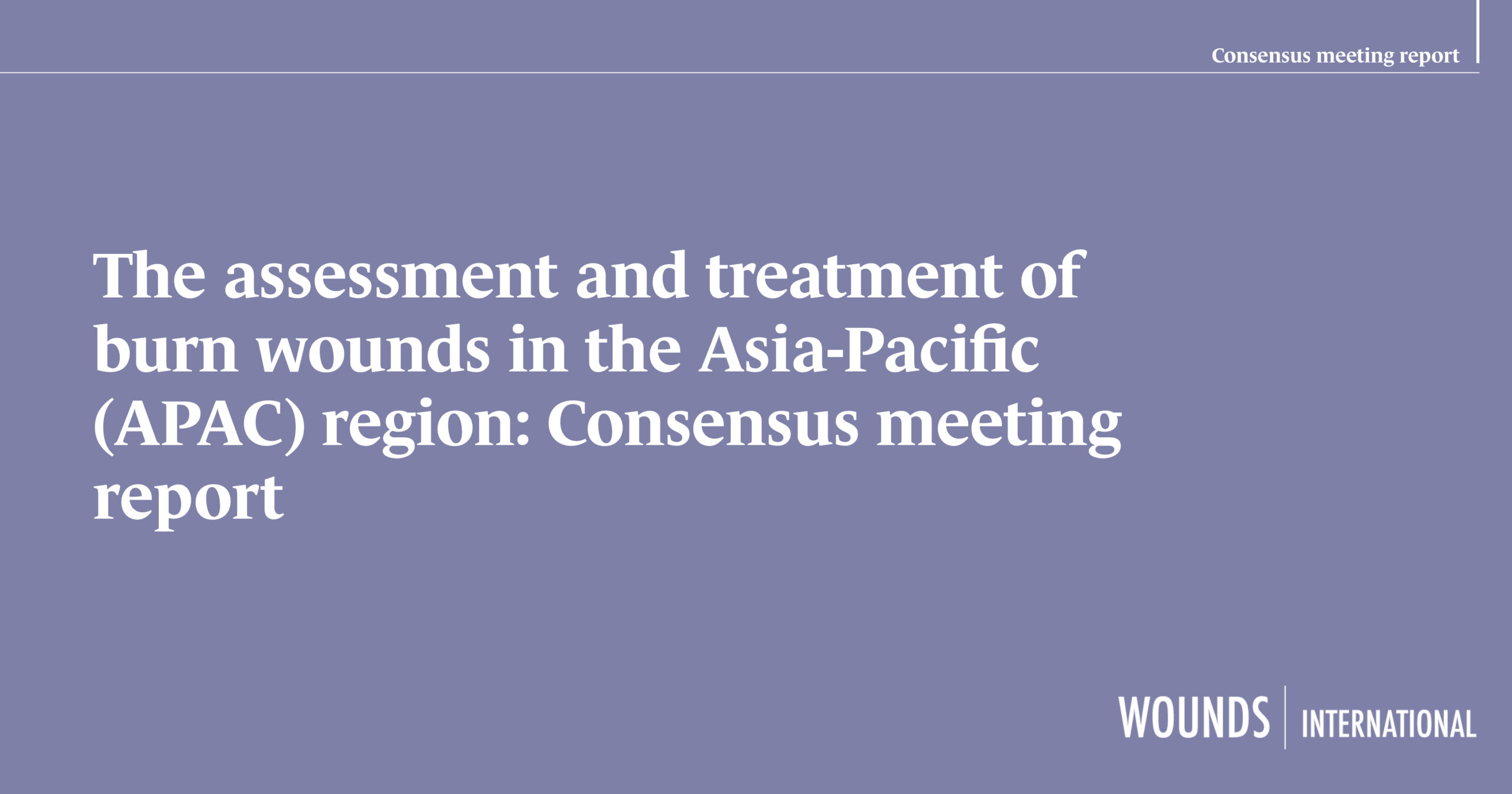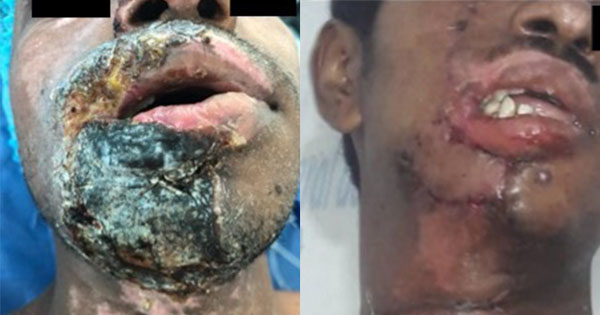For the first stage of this work, a literature review (Fanstone and Price, 2024a) was conducted to identify existing knowledge of risk factors for contracture in major joints after burns. This review included relevant papers identified up to June 2019. Overall, 94 papers were reviewed, including 10 additional relevant papers published between 2019 and 2021; most were from high-income country (HIC) settings. The source and types of papers are shown in Table 1.
Of these 94 publications, almost half did not cite any evidence for the contracture risk factors cited (putative papers). A further 18 studies used descriptive statistics only. Excluding the systematic reviews, only 15 papers evaluated general risk factors for contractures using interferential statistical analysis, but these were often undermined due to lack of or inconsistent definitions of joints at risk, contracture outcomes and variable timing of evaluations [Box 1].
The fact that 75% of publications were from HICs is perhaps unsurprising (Wall et al, 2023) but the wide variation in methodologies and the lack of any consistent definition for joints at risk or for contracture was unexpected. These methodological variations mean that it is very difficult to compare or collate findings from these studies; the lack of a strong evidential base for many potential contracture risk factors or preventive measures was emphasised in the two systematic reviews of general risk factors for contracture (Fergusson et al, 2007; Oosterwijk et al, 2017).
It was notable that the usual time of contracture evaluation in most of the HIC publications was at discharge from hospital after the acute burn – mean 21 days (Richardet al, 2017; Goverman et al, 2017; Godleski et al, 2018), which is far too early in the contracture development timeline to provide an accurate picture (Schouten et al, 2019).
Notwithstanding these deficiencies, almost 70 potential risk factors for contracture have been described, the majority of which relate to biomedical patient and burn characteristics or treatment factors in HIC settings. The impact of socioeconomic and cultural factors in contracture development referred to in papers from low- and middle-income countries (LMICs) are rarely considered in HIC studies; the effect of health system (“environmental”) factors, including healthcare infrastructure and geographic distribution, was highlighted in a recent systematic review of contracture development in children in LMICs (Meng et al, 2020). Only one-third of potential risk factors reported in the literature have been shown to be statistically significant and are summarised in Table 2.
Overall, eight factors ranked within the top five most frequently reported contracture risks in papers offering any evidence, even if not statistically significant [Table 3].
Most cited risk factors for contracture are reported from high-income country settings, are mainly biomedical and do not include socioeconomic or healthcare system factors.
What do clinicians believe?
Having examined the literature, due to the lack of literature from LMICs, a survey of burns clinicians (13 burn surgeons and four therapists) with experience practising in LMICs was conducted to collect their opinions on the main risks for burn contractures (Fanstone and Price, 2024b). The average length of their experience in burn care was 13 years; participants represented Ghana, Ethiopia, Malawi, Nigeria, South Africa, Nepal and India, but also had experience in other LMICs.
When asked to report their opinions on the top five most important risk factors for burn contracture in LMICs, these 17 clinicians suggested 87 different risk factors; in contrast to evidence from the literature, only 34 of these (39%) were related to the burn injury, complications or treatment [Table 4].
The top five risk factors most frequently cited by the clinicians were lack of splinting, lack of physiotherapy, lack of early excision and skin grafting, low socioeconomic status and presence of infection. The majority (16/17) of clinicians reported that their opinions were informed mainly or entirely from their clinical experience in LMICs, rather than from the literature. None of the participants were able to mention any article or specific publication that had helped formulate their opinions on risk factors for burn contractures.
None of the institutions where the participants worked routinely collected any data on the incidence or severity of burn contractures at department or hospital level. Only four therapists and one surgeon reported documenting (usually subjective) contracture severity in their patient notes.
Low- and middle-income country clinicians:
- Had a different perspective on contracture risk factors.
- Included healthcare system and socioeconomic factors in risks for contracture.
- Did not use any standardised definition of contracture.
- Rarely documented any objective measurements of contractures.
A field study in Bangladesh
In 2019, a cross-sectional observational study of contracture risk factors was conducted in Bangladesh, which has been reported in detail elsewhere (Fanstone et al, 2024). Of 104 potential risk factors identified from the literature review and the clinical survey outlined earlier in this paper and reported elsewhere in further detail (Fanstone and Price, 2024a, b), 48 were feasible for evaluation in the field study, including socioeconomic details, healthcare access, follow-up and rehabilitation factors as well as burn and treatment factors.
Detailed semi-structured interviews were conducted with eligible patients attending Dhaka Medical College Hospital and Sheikh Hasina National Institute for Burns and Plastic Surgery with post-burn contractures in major joints to try to identify any significant contracture risk factors in that population. Joints at risk were noted and contractures were defined as any reduction in expected range of movement, based on goniometry in at least two planes of movement for all major joints except the neck. Results were analysed using two methods (Burn Contracture Severity Scoring [BCSC] and actual Loss of Movement Scores (LMS)) at both whole person (p) and individual joint (j) levels (Fanstone et al, 2024).
Forty-eight adult participants with 126 major joints at risk were recruited to the study; participants came from every district in Bangladesh. The overall joint contracture rate of joints at risk of contracture in this population was 51%; the highest contracture rates were seen in the neck, shoulder and ankle, which also had the most severe contractures and the greatest LMSj scores [Figure 1]. Anatomical joint location was identified as an independent statistically significant risk factor for contracture (neck and shoulders were more likely and wrists less likely to contract than other major joints).
Different anatomical joints have different inherent risks of contracture, which may outweigh or alter the impact of other risk factors.
Apart from joint location, analysis of the results revealed five factors that were statistically significant risks for the development and/or severity of contracture and five factors that were protective against contracture/severity [Table 5]. At person level, employment status, self-discharge and fewer follow-up visits were associated with more severe contractures and greater movement loss. Full-thickness burns were associated with more severe contractures as was younger age at burn. Participants who knew about the risk of contracture development or received pressure treatment had less movement loss; refusal of skin graft was associated with greater movement loss. Joints that had pressure treatment had fewer contractures and grafted joints had less severe contractures.
This study confirmed some of the perceptions of LMIC literature and of the LMIC clinicians surveyed; most of the contracture risk factors identified did not relate to the burn itself or to biomedical aspects of treatment. This is an important finding and deserves wider recognition among burn care and public health professionals.
The cross-sectional study also revealed a number of important issues affecting research into contractures in low-income settings. Burn care clinicians in LMICs face enormous clinical loads, often without multidisciplinary teams or rehabilitation professionals; they have little time (or training) to undertake high-quality research projects. Specialist burns centres are few and geographically distant from much of the population. Government-funded healthcare is limited and patients have to pay for most services and medicines, often with minimal annual incomes, which greatly constrains clinicians’ ability to ensure optimal care is provided. Medical records and databases are scanty and rarely if ever computerised (Fanstone et al, 2024) and follow-up is patient-driven, making accurate analysis of contracture prevalence and severity impossible.
All these factors contribute to the current lack of evidence-based knowledge about risk factors for post-burn contractures in LMICs. External support from HIC-based researchers is vital but leads to other problems with the need for translation, lack of knowledge of cultural norms and difficulty in gaining the necessary trust from both local clinicians and patients. Locally led LMIC research with support from the global burns community has to be a priority if we are to understand contracture risk factors better.
Research into risk factors for burn contractures in low- and middle-income countries is extremely difficult, but is essential if contracture prevention is to be achieved.
Where do we go from here?
The difficulties in identifying and correcting the main risk factors for burn contractures in LMICs may appear insurmountable, but the consequent health burden, distress and economic loss faced by individuals, their families, communities and whole populations in LMICs mandates greater action.
While many of the contracture risk factors identified to date are related to the social determinants of health (Meng et al, 2020), which cannot be changed overnight, many risk factors identified are modifiable with achievable steps (WHO, 2008).
The modifiable risk factors could be viewed as variables affecting overall quality of a healthcare system. This includes accessibility, equity, effectiveness, timeliness and responsiveness of care, as well as the nature of clinical care delivered. Therefore, this author has proposed (Fanstone, 2024) that contracture (presence/severity) could be an appropriate indicator of the overall quality of care received by burn patients in different countries, regions, districts or hospitals.
Future research
Many other modifiable contracture risk factors (e.g. poverty, lack of education especially for women, lack of access to appropriate specialist burn care) require more widespread and potentially costly changes, which require higher-level government action. Despite the evident need, policy change and service improvement are unlikely to occur without good quality data, which reflects the reality of the situation. LMIC burn patients need the clinical and research burn communities to develop a more rigorous approach to measuring contracture risks and outcomes.
A paper describing individual patient stories selected from the cross sectional study population (Fanstone and Khan, 2024) showed that (at least in LMICs), even patients with similar burns and specialist burn care can have very different outcomes. How different risk factors interact and which are the strongest influences is not yet known; more research is required. The scope and quality of existing evidence (from both HICs and LMICs) must be improved to enable comprehensive prevention strategies. An agreed standardised definition for contracture, consensus on what constitutes a joint at risk of contracture, appropriate and standardised methods of objective contracture measurement and accurate electronic recording of baseline patient datasets in LMICs would provide an excellent foundation for future data analyses and understanding of predominant contracture risk factors in different populations. Based on the literature review and the cross-sectional study findings, recommendations have been made for planning and reporting risk factors studies in the future (Fanstone et al; 2024).
Future research studies of contracture risk factors in LMICs should:
- Use a standardised definition for contracture.
- Use a standardised definition of joint at risk of contracture.
- Use a simple but reliable and objective method of contracture assessment.
- Collect risk factors at the appropriate level, whether at the whole person or joint level.
- Consider the different risk profiles of different joints, consider stratification of joint locations when analysing.
- Define and operationalise risk factors to standardise the collection of risk factor data in the study population.
- Consider the appropriate time frames to collect risk factors and outcomes – remember contractures are changeable over a period of time.
- Document patient characteristics, timing and types of treatments.
- Distinguish between whole patient and individual joint analyses.
- Choose appropriate methods of analysis.
- Be locally led with external support where necessary.
Conclusion
While some contractures may occur despite optimal care, it is widely believed that most are preventable. Effective prevention requires better knowledge and understanding of risk factors and their interactions, which may vary significantly in different populations. Contracture risk factors in LMICs include cultural, educational, socioeconomic and health system factors, which may be less significant in HIC settings; different approaches to research are required. To reduce the burden of disability, disfigurement, reduced quality of life, loss of productivity, physical suffering and psychosocial distress caused by contractures in LMICs, further good quality research on contracture risk factors in these populations is urgently needed. Risk factors for burn contractures are likely to be different in different environments.
Subject to agreement on the definition and measurement of burn contracture presence, there may be potential for a contracture to do what other indicators do, which is to signal issues within the system. Contracture incidence and severity after burns could act as a relatively simple measure of a highly complex system, which would otherwise defy measurement and therefore improvement in LMIC settings.





